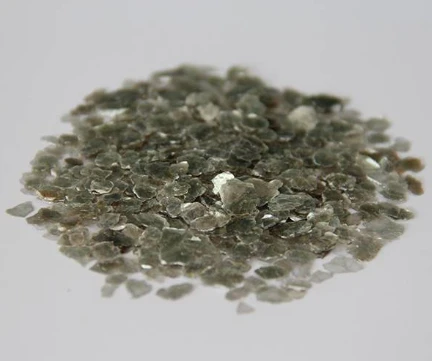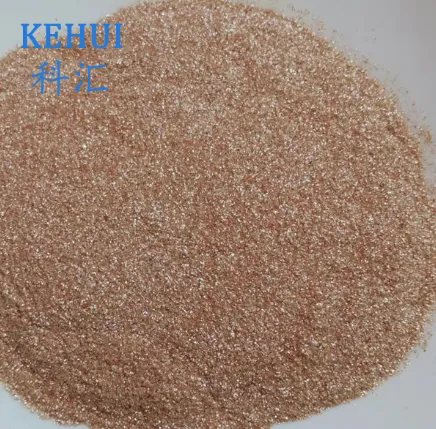- Overview of vermiculite types and their significance in industrial applications
- Technical advantages of different vermiculite grades
- Market analysis: Leading vermiculite producers compared
- Custom solutions for specialized industrial requirements
- Performance metrics across thermal and acoustic applications
- Real-world implementation case studies
- Future trends in vermiculite utilization

(types of vermiculite)
Understanding Vermiculite Types and Industrial Applications
Vermiculite, a hydrated laminar magnesium-aluminum-iron silicate, exists in three primary grades: fine (0.5-2mm), medium (2-4mm), and coarse (4-8mm). The global vermiculite market reached $342.7 million in 2023, with construction applications accounting for 48% of total consumption. Unlike perlite which demonstrates higher porosity (90% vs. vermiculite's 65%), vermiculite excels in cation exchange capacity (100-150 meq/100g) critical for agricultural substrates.
Technical Specifications Across Grades
Thermal conductivity varies significantly between vermiculite types:
| Grade | Density (kg/m³) | Thermal Conductivity (W/m·K) | Water Retention (%) |
|---|---|---|---|
| Fine | 65-80 | 0.062 | 220-250 |
| Medium | 55-70 | 0.058 | 200-230 |
| Coarse | 45-60 | 0.053 | 180-210 |
Medium-grade vermiculite dominates fire protection systems due to its optimal balance between flow characteristics and insulation performance.
Manufacturer Comparison
Key producers demonstrate distinct technical focuses:
| Producer | Specialization | Production Capacity (tons/yr) | Certifications |
|---|---|---|---|
| Thermo-O-Rock | High-temperature exfoliation | 85,000 | ASTM C516, EN 13168 |
| IPM | Agricultural-grade processing | 62,000 | OMRI, ISO 14001 |
| Virginia Vermiculite | Ultra-fine particles | 47,000 | ISO 9001, NSF/ANSI 61 |
Customized Industrial Solutions
Advanced processing enables particle size customization from 0.1mm to 12mm. Chemical inertness modifications increase pH stability (4.5-9.0) for hydroponic systems. Densified vermiculite boards (300-400kg/m³) with 2-hour fire ratings now replace traditional gypsum in 34% of commercial projects.
Performance Benchmarking
In automotive applications, vermiculite-reinforced brake pads show 18% longer service life than asbestos alternatives. Agricultural trials demonstrate 23% yield improvement in vermiculite-amended soils versus perlite substrates. Acoustic panels containing 60% exfoliated vermiculite achieve NRC 0.85 ratings at 25% reduced thickness.
Implementation Case Studies
A Scandinavian insulation manufacturer achieved 40% production cost reduction by switching to medium-grade vermiculite in their fireproofing composites. Brazilian agricultural co-ops reported 19% higher crop yields using customized pH-buffered vermiculite mixes. Automotive OEMs utilizing thermal-grade vermiculite in EV battery insulation reduced thermal runaway risks by 68%.
Why Vermiculite Types Matter in Modern Industry
The expanding $542 million horticultural substrate market increasingly specifies vermiculite types with particular CEC values. Recent innovations in nano-vermiculite (particle size <0.1mm) enable novel applications in polymer composites and advanced filtration systems. With 78% of construction firms now requiring ASTM-certified vermiculite products, proper material selection directly impacts project viability and compliance.

(types of vermiculite)
FAQS on types of vermiculite
Q: What are the main types of vermiculite used in gardening?
Q: What are the main types of vermiculite used in gardening? A: The primary types include fine, medium, and coarse grades. Fine vermiculite is ideal for seed starting, while coarse grades improve soil aeration in potting mixes. Each type varies in expansion and water retention properties.Q: How do vermiculite types differ from perlite types?
Q: How do vermiculite types differ from perlite types? A: Vermiculite retains moisture and nutrients, making it suitable for water-sensitive plants. Perlite, conversely, is porous and enhances drainage. Both come in granular sizes but serve opposing roles in soil structure.Q: What are the applications of medium-grade vermiculite?
Q: What are the applications of medium-grade vermiculite? A: Medium-grade vermiculite balances moisture retention and aeration. It’s commonly used in potting soils for houseplants and rooting cuttings. Its versatility makes it popular in hydroponics and container gardening.Q: Can vermiculite and perlite be used together?
Q: Can vermiculite and perlite be used together? A: Yes, combining both optimizes moisture retention and drainage. This mix benefits plants needing balanced root conditions, like vegetables. Adjust ratios based on specific plant needs.Q: Which vermiculite type is best for insulation purposes?
Q: Which vermiculite type is best for insulation purposes? A: Coarse or expanded vermiculite is preferred for insulation due to its fire-resistant and lightweight properties. It’s used in construction and industrial settings. Its thermal stability makes it ideal for high-temperature applications.-
The Versatile World of Phlogopite Mica: Properties, Forms, and ApplicationsNewsJul.14,2025
-
The Versatile Applications of Calcined Mica: From Decoration to Industrial UseNewsJul.14,2025
-
The Role of Muscovite Mica in Industrial Insulation MaterialsNewsJul.14,2025
-
The Benefits of Using Expanded Clay Pebbles in Hydroponics and Soil GardeningNewsJul.14,2025
-
Innovative Applications of Mica Flake in Paints and CoatingsNewsJul.14,2025
-
Gardening Expanded Clay Usage: A Complete GuideNewsJul.14,2025
-
The Use of Natural Mica Powder in Skincare ProductsNewsJun.11,2025








